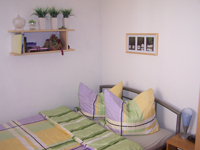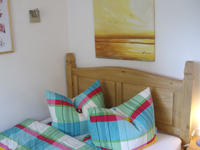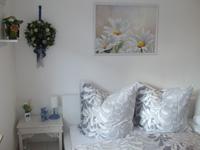The University of Cologne - Interesting facts about the university, history, faculties and other information
The University of Cologne or its predecessor university was founded in 1388 and has since been a center for science and teaching at a European level. Today the University of Cologne is one of the leading research universities in the Federal Republic of Germany. The following report is intended to take a comprehensive look at the University of Cologne. For this purpose, the history of the university will be discussed first.
The development of the same and the different faculties are also to be examined in more detail here. The organization and administration of the university are also briefly described. The holiday apartment Cologne presents you a huge piece of Cologne history!
The history of the University of Cologne
As already noted, the predecessor university of the University of Cologne was founded on May 21st, 1388. This was the first university founded in the city of Cologne and, according to the first official seal, was called "universitas studii sancate civitatis coleniensis". At that time, i.e. in the Middle Ages, the city of Cologne already had around 40,000 inhabitants and was the second largest city in the Holy Roman Empire.
.gif)
It is noteworthy that the predecessor of the University of Cologne was the fourth of this type in the Holy Roman Empire . The initiative to found the same came from the Cologne Council of the Free Imperial City and was also financed by the latter. There were a total of 21 founding members, all of them Magistri. At the beginning there were already 20 professors employed at the university, these started on January 6th, 1389.
In comparison to the other universities in Prague, Vienna and Heidelberg that existed in the Holy Roman Empire, the University of Cologne was already beginning with church law as well as imperial and Roman law . In addition, 700 students enrolled right after the foundation, making the university one of the largest on the European continent. The students came from all parts of Europe and used Latin as a lingua franca.
In addition to ecclesiastical and Roman law, which were taught in the theological and law faculties, there was also a medical and artist faculty at the beginning . The course contents of the last one consist of grammar, logic, rhetoric, arithmetic, astronomy, geometry and music.
.gif)
The faculties back then
The students came mainly from Westphalian, Rhenish and Dutch areas. However, some students from Scotland and Scandinavia also visited the university. The faculties were spread over the city of Cologne . Some of them were in the area of the Cologne Cathedral and others in the northern old town, in today's "An der Rechtschule" street. The students not only studied in these parts of the city of Cologne, but also lived there in strict residential communities, so-called burses.
.gif)
.gif)
The artist faculty
This faculty had to be completed by all students in order to be able to start a higher degree afterwards. The facility was located in the Versélen convent opposite a Dominican monastery.
The Theological Faculty
The theological faculty was housed in the chapter house of the cathedral chapter and was one of the most renowned institutions. This faculty changed its facilities several times over the years.
.jpg)
.jpg)
.jpg)
.jpg)
.jpg)
.jpg)
.jpg)
.jpg)
.jpg)
.jpg)
The Faculty of Law
First, a classroom was used at the forest market, this was expanded in 1477. Today's street "An der Rechtschule" has been named after the law school .
.jpg)
.jpg)
.jpg)
The medical school
The medical faculty was the smallest of the faculties. For this reason, the premises of the artist faculty were initially used. It is interesting that an anatomy was carried out at this faculty as early as 1480 in order to get to know the human body better. However, a separate facility for this faculty was only completed in 1722 and contained a theatrum anatomicum.
The enrollment fees at that time
In order to enroll or matriculate at the University of Cologne, the first-year students had seven Albus , the then common currency in the Rhineland, to pay for it . These seven albuses also include an albus for the pedell, an organizational assistant. In some cases, students with little financial resources were waived by the principal. This also happened with particularly famous people. It is also worth mentioning that the start of studies was not uniform with regard to the different faculties.
The closure of the University of Cologne and the new university
As part of the occupation by French troops in 1794, the University of Cologne was finally converted four years later into a central school for the Department de la Roer . This was also due to the fact that the professors at the University of Cologne were initially not prepared to take an oath on the Republic of France.
.jpg)
.jpg)
.jpg)
.jpg)
It wasn't until many years later in 1919 that the university was re-founded and re-established and was initially housed in a building on Claudiusstrasse. The city of Cologne and its citizens have long been trying to found a new university. But first the Prussian government had to be persuaded, which finally succeeded in 1919.
The contract for the establishment or re-establishment of the University of Cologne was signed by the then mayor of the city and later Federal Chancellor, Konrad Adenauer , signed. The university was an amalgamation of the Cologne Commercial College, the German Academy for Practical Medicine and the College for Local and Social Administration. Nowadays the building, which is called old university , is still used by the Cologne University of Applied Sciences.
.jpg)
.jpg)
.jpg)
.jpg)
.jpg)
The facilities of the new University of Cologne
Until 1934 the former facilities of the Cologne Commercial College were used . As more and more students wanted to study at the university at that time, the new main building on Universitätsstrasse was inaugurated in 1935. The lectures had to be stopped due to the heavy air raids by the Allies in World War II, and the university was badly damaged.
The business was only restarted after the war in 1945. The university was expanded from 1956 to 1960 for the Faculty of Economics and Social Sciences. Over the years, further conversions and extensions to the University of Cologne followed. In order to ensure high-quality knowledge transfer, the University of Cologne employs more than 4,850 academic staff.
The University of Cologne today
After its long and eventful history, the University of Cologne is now one of the leading research universities in the Federal Republic . There are six faculties in total: the Faculty of Economics and Social Sciences, the Faculty of Law, the Faculty of Medicine, the Faculty of Philosophy, the Faculty of Mathematics and Natural Sciences and the Faculty of Human Sciences.
Currently more than 49,000 students are studying at the university, which has 631 professors. There are a total of 339 courses. These include Bachelor and Master courses, teacher training courses and those with a state examination.
The Faculty of Economics and Social Sciences at a glance
It is particularly important to the University of Cologne that it works closely with companies, which creates a strong practical connection. It is worth mentioning that this faculty is very well positioned within the university rankings , also in an international environment. Not only employers, but also ministries use the WiSo Faculty as a source of information.
.jpg)
.jpg)
.jpg)
.jpg)
.jpg)
.jpg)
The Faculty of Law
This is one of the most traditional and largest faculties within the Federal Republic of Germany . What is interesting is the wide range of courses on offer, which range from historical foundations to current fields of law. For example, telecommunications and medical law are taught. The focus is not only national, but also international.
.jpg)
.jpg)
.jpg)
.jpg)
.jpg)
.jpg)
.jpg)
.jpg)
The medical school
There are currently more than 3500 students studying at the Medical Faculty of the University of Cologne. The teaching content from medical teaching, the care of the sick and medical research are combined here.
The Faculty of Philosophy
This faculty of the University of Cologne is one of the largest teaching and research institutions in the humanities on the European continent. The range of courses is also broad in this faculty and offers a variety of topics in modern teaching and research.
.jpg)
.jpg)
.jpg)
.jpg)
.jpg)
.jpg)
.jpg)
The Faculty of Mathematics and Natural Sciences
The Faculty of Mathematics and Natural Sciences at the University of Cologne is divided into different departments. These are the departments for biology, chemistry, didactics of mathematics and natural sciences as well as for geosciences, mathematics and computer science as well as the department of physics. The individual departments count with modern equipment and many of the professors teaching there have been awarded, for example in the International Journal of Sciences and Mathematics Education.
The Faculty of Human Sciences
This faculty is also divided into individual departments, a total of four. These include educational and social sciences, psychology, curative education and rehabilitation. Teaching content revolves around education and upbringing of people as well as their development and human behavior in society.
.jpg)
.jpg)
.jpg)
.jpg)
.jpg)
.jpg)
The facilities of today's University of Cologne - research centers and teaching
The University of Cologne has a number of research centers and facilities in which the students make practical connections to the theoretical lectures. Examples of this are the Excellence Cluster CECAD (Cluster of Excellence Cellular Stress Responses in Aging-associated Diseases), the Center for Molecular Medicine (ZZMK) and the Cologne Center for Genomics . The Center for Teacher Education (ZfL) and the Professional Center: Perspectives for studies and work are available for teaching.
Other university facilities are the university and city library , the central student advisory service, the student secretariat, the department 9 international and the CompetenceCenter e-learning. There are also service, sports, theater and music facilities. The city's student union takes care of the areas of social affairs, dormitories, the canteen and financing, among other things.
The organization and administration of the university
The university is headed by the rectorate , which consists of the rector, six protectors and a chancellor. The rector takes the leading role and is directly elected by the university council, which has a total of ten members. The first term of office must last at least six years, and another at least four years. The Chancellor of the Rectorate is also responsible for the management of the university administration. This takes care of the development of the university, the affairs of the students, the organization as well as IT and purchasing. Care is also taken for building and property management. The university also communicates with the outside world and marketing, as well as legal, security and environmental matters.
In order to promote the equality of male and female students or to guarantee this, there is an equal opportunities officer at the University of Cologne . In addition, each of the six faculties at the university counts with a liaison lecturer who ensures that there is no discrimination against individual students or groups who have a different skin color, religion, ethnic origin, age or sexual orientation. The respective lecturers of confidence in the individual faculties can be reached by email or post. A personal appointment can then be made to solve the problem. Inquiries are always treated confidentially.
The university's cultural and sports offer
The University of Cologne also has a wide range for students in terms of culture and sport. For those who are interested in music, there are various ensembles in which you can listen but also participate. In cooperation with the Cologne University Theater, exercises, seminars and workshops on theater, photo and film are regularly offered and are perceived with great interest by the students. Also of interest is the Radio Kölncampus , which is managed exclusively by students . With regard to sport, there are also a variety of offers. Here the students can take courses, train in the gym and much more.
Final words about the University of Cologne
The University of Cologne has a long and eventful history that goes back to 1388. After the occupation of the city of Cologne by the French, the negotiations with the Prussian government and the violent bombing of the Second World War, almost 50,000 students are studying at the university today, who are excellent professors and characterized by numerous modern research and teaching facilities. Many of the professors and lecturers teaching at the university have received awards in renowned specialist magazines. People who want to study at the university can choose between 339 courses at one of the six faculties. Bachelor's, master's and state examination courses are offered.
It is advantageous that there is an equal opportunities officer and a liaison lecturer who take care that individual students are neither discriminated against nor suffer from their fellow students in any other way. The cultural and sports offer is just as broad and offers activities for everyone. You can find extensive information about the entire range of courses on the university's website. Here, interested parties can also find all the information they need about the traditional University of Cologne.
Contact and address
Address: Albertus-Magnus-Platz, 50923 Cologne
Telephone: 0221/4700
website
Accommodation in downtown Cologne!
Do you want to walk to the cathedral? Do you want to walk to the fair? Then book our holiday apartment Cologne , then you can easily reach Cologne Cathedral on foot! Simply cross the Rhine over the Deutzer Bridge and stroll through the old town. You have reached the cathedral in about 14 minutes! We look forward to your inquiry!






